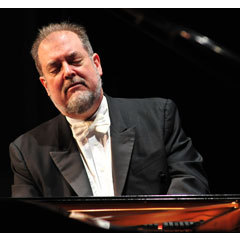Classical Concert Review: Garrick Ohlsson’s Chopin
Pianist Garrick Ohlsson is helped by having unusually wide stretches in both hands. And like Chopin’s own playing, he never resorted to harshness or banging even in climactic passages.
By Caldwell Titcomb
Of all the musical events scheduled for this season I was most eagerly looking forward to the November 14 Symphony Hall recital by Murray Perahia, whom I consider the finest living pianist. So I was dismayed when the Celebrity Series announced that a hand injury had caused the cancellation of Perahia’s entire fall tour. This is not the first time that Perahia has suffered a hand impairment; it has happened at least three times in the past.
The Celebrity Series quickly managed to snag Garrick Ohlsson as a replacement on the same date. So I dutifully went to hear him in an all-Chopin program to honor the bicentennial of the composer’s birth and admit that the trip was decidedly worthwhile. Ohlsson (b. 1948) comes by his involvement with Chopin honestly. In 1970 he won the Chopin International Piano Competition. And he has released a 16-CD set of Chopin’s complete works, which are as idiomatically pianistic as any music ever written.
Ohlsson began with the F-major Nocturne (Op. 15, No.1). He played the right-hand melody beautifully, which returned after a stormy F-minor middle section. Turning to the dozen Op. 25 Etudes, he chose Nos. 1, 2, 5, 6, and 7. These started off—perhaps a shade too slowly—with the famous, A-flat-major “Aeolian Harp” etude, with its persistent arpeggiation, followed by four minor-mode items. These all went admirably, though not in a class with Perahia’s matchless 2002 recording of all 24 etudes.
Then came the lengthy, F-sharp-minor Polonaise (Op. 44); the short A-minor Mazurka (Op. 17, No. 4), with its ambiguous ending; and (with no break) a dashing rendition of the Scherzo No. 1 in B-minor (Op. 40).
After intermission we heard the Variations Brillantes (Op. 12), which Chopin wrote at 23 on a theme from Hérold’s new opera Ludovic. This is no masterpiece, but the concluding four-movement Sonata No. 3 in B-minor (Op. 58) definitely is a masterpiece. Ohlsson dispatched this late work (1844) with bravura.
The pianist is helped by having unusually wide stretches in both hands. And like Chopin’s own playing, he never resorted to harshness or banging even in climactic passages.
There were three encores: the Mazurka Op. 17, No. 2, followed by two Chopin warhorses, the C-minor “Revolutionary” Etude (Op. 10, No.12) and the heroic A-flat-major Polonaise (Op. 53).
So Ohlsson is not Perahia; but he proved an impressive pinch hitter.

